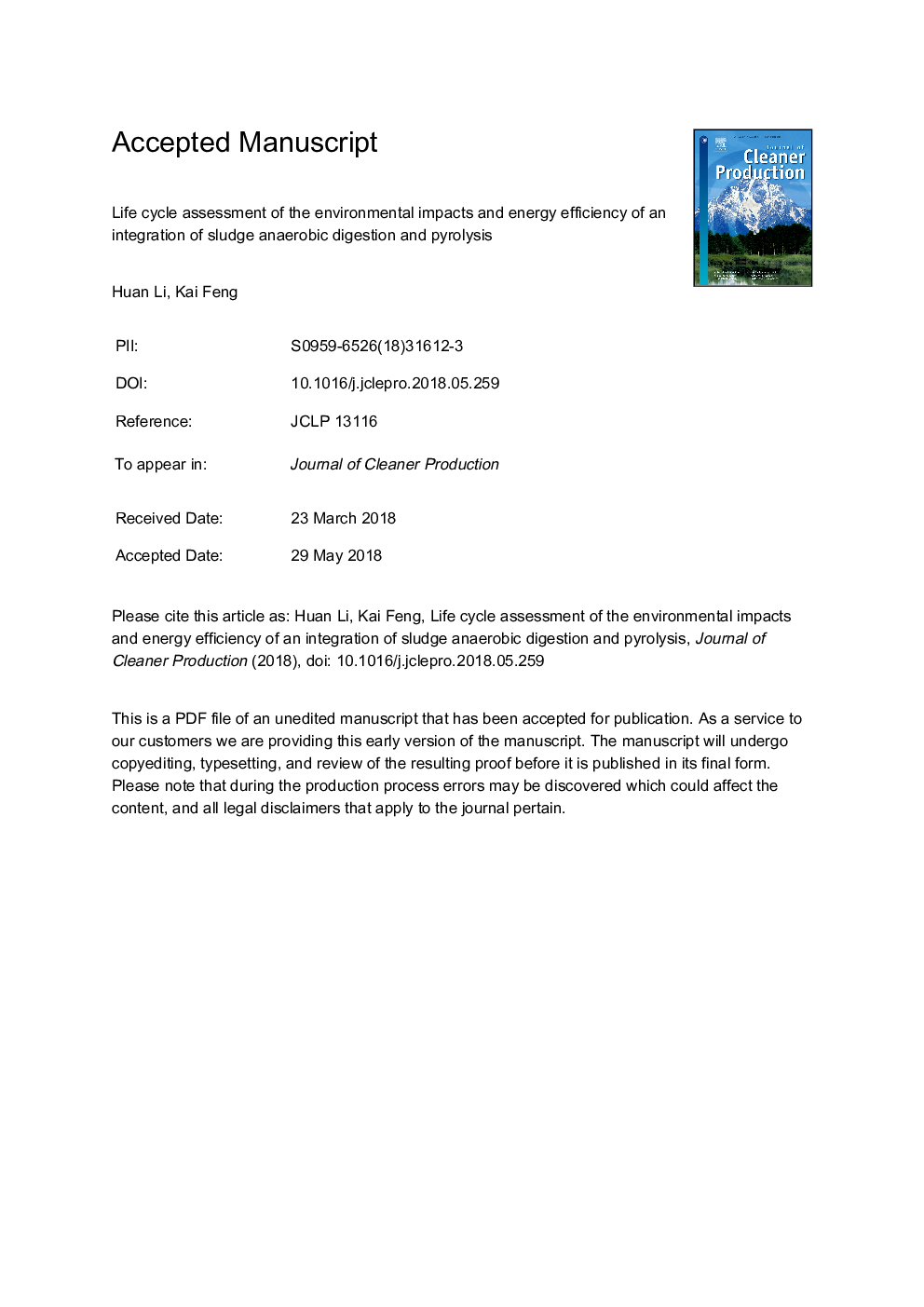| Article ID | Journal | Published Year | Pages | File Type |
|---|---|---|---|---|
| 8094097 | Journal of Cleaner Production | 2018 | 30 Pages |
Abstract
The integration of pyrolysis and prepositive anaerobic digestion could be a solution to improve energy recovery from sewage sludge. However, it is not clear whether this integrated pathway always outperforms the two single technologies when dealing with different types of sludge. In this study, the integrated pathway is compared with anaerobic digestion and pyrolysis from the points of view of life cycle environmental impacts and energy efficiency. In addition, the effect of the organic content in the feed sludge on the performance of the three pathways is investigated. The results indicated that the environmental impacts of the three pathways are heavily dependent on their energy inputs and outputs. The single pyrolysis pathway exhibited the lowest energy efficiency and the heaviest environmental burden, and only the sludge with volatile solids in total solids (VS/TS) higher than 63% allowed the system generate a net energy output. The integrated pathway had better environmental performance and energy efficiency than single pyrolysis because prepositive anaerobic digestion enhanced the conversion of sludge organic matter to energy. When sludge VS/TS exceeded 61%, the integrated system exported surplus heat. Anaerobic digestion performed the best among the three pathways because it required no energy and material expenditure for thermal drying and pyrolysis. Also, a VS/TS of 52% in the feed sludge corresponded to the balance point for equal energy input and output. Therefore, anaerobic digestion should be the first choice when designing a sewage sludge disposal system. The integrated pathway is an alternative for high organic content sludge because of its high conversion rate of sludge to energy.
Related Topics
Physical Sciences and Engineering
Energy
Renewable Energy, Sustainability and the Environment
Authors
Huan Li, Kai Feng,
